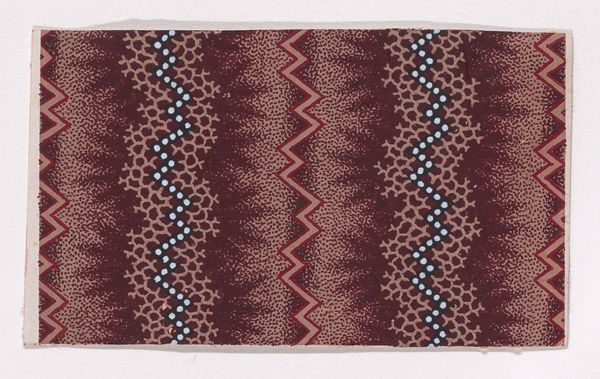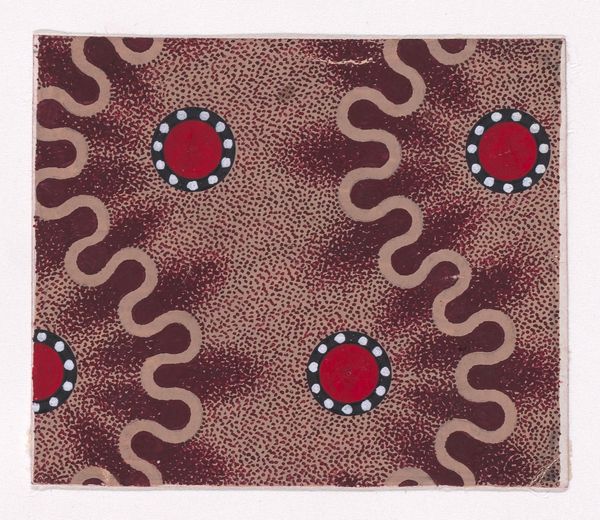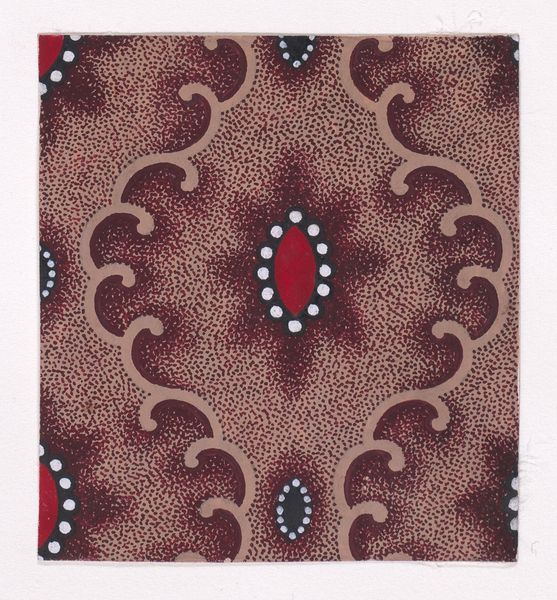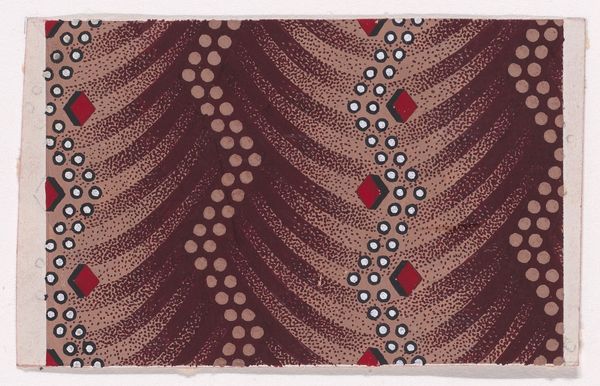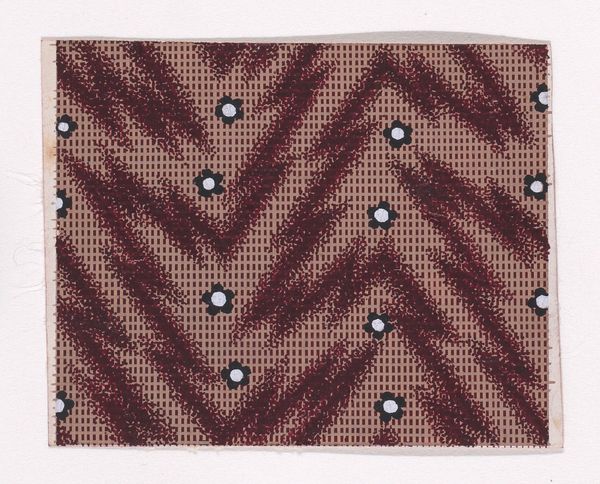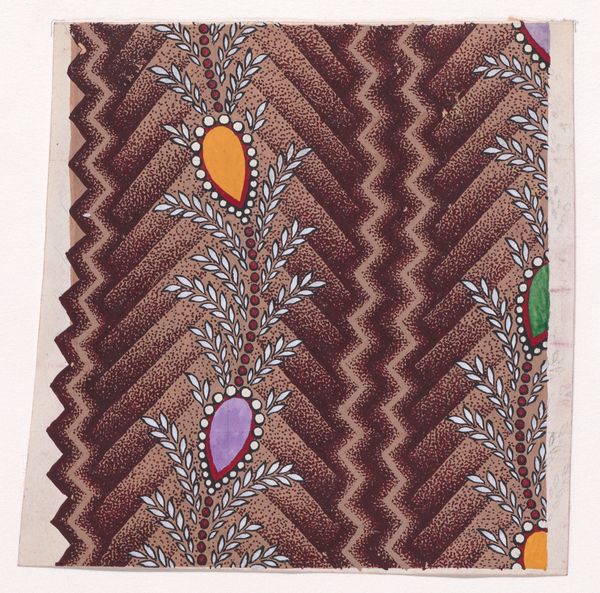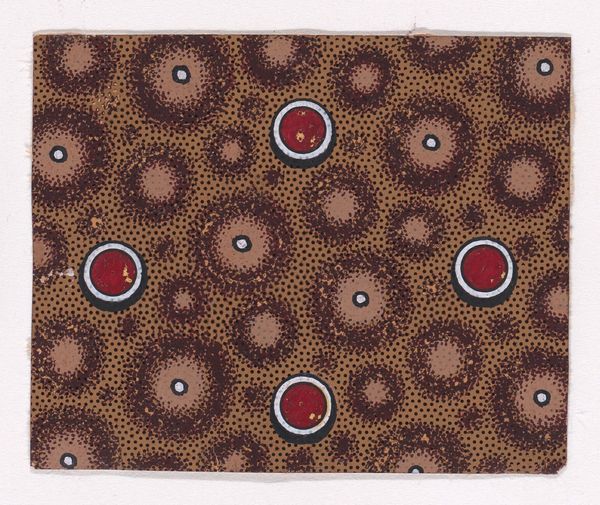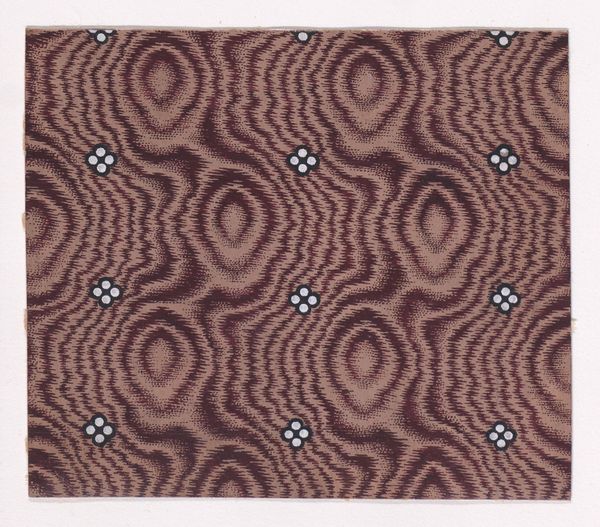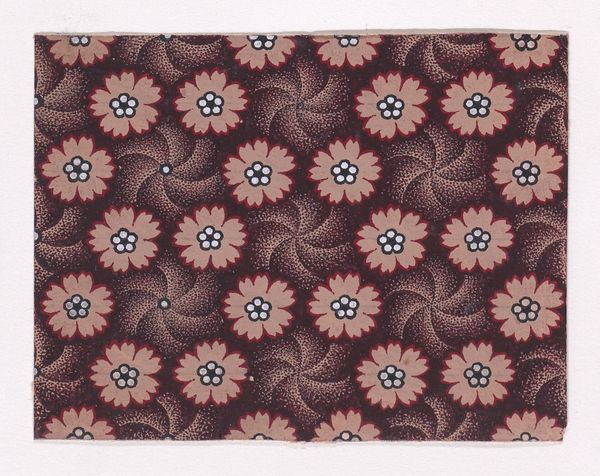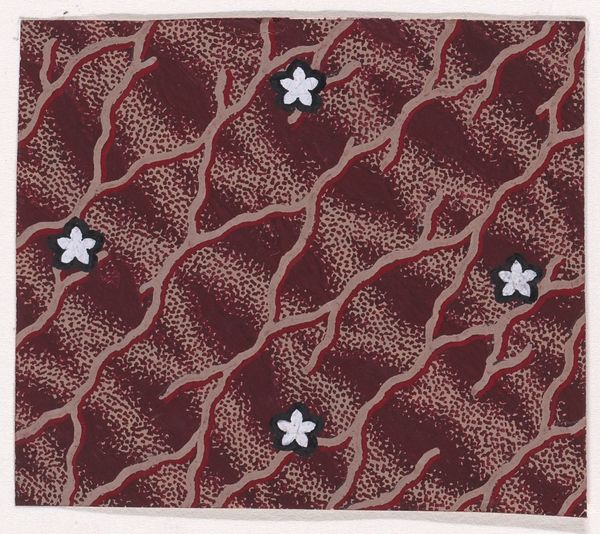
Textile Design with Alternating Quatrefoils Bordered with Pearls and Framed by Interlacing Ribbons 1840
0:00
0:00
#
pattern design
#
textile design
#
decorative-art
#
imprinted textile
Dimensions: Sheet: 2 1/4 in. × 3 in. (5.7 × 7.6 cm)
Copyright: Public Domain
Editor: So, here we have an anonymous textile design from around 1840, featuring alternating quatrefoils, bordered with pearls and framed by interlacing ribbons. It is lovely in its complexity! I am curious though, how did these pattern designs function within society at that time? Curator: That's an interesting question! In the 1840s, textile design was increasingly linked to industrial production and emerging consumer culture. These designs, often commissioned or created by anonymous artists as you mentioned, catered to the growing demand for fashionable, mass-produced fabrics. What do you think the prominent use of the quatrefoil and pearl details might suggest about the target audience or their aspirations? Editor: Hmm, given the period, those motifs do make me think about luxury goods. Perhaps this pattern aimed to bring a touch of the aristocratic into the middle-class home? Curator: Precisely! The "pearls" and ribbon detailing evoke exclusivity, subtly referencing wealth and status that would have appealed to a burgeoning middle class eager to emulate the aristocracy. What implications might that have for us interpreting the work today? Editor: It shifts the focus. It’s no longer *just* about aesthetics. Understanding the social motivations behind such design choices reveals much about Victorian society's values and anxieties. It shows how art served this purpose, blurring the lines between pure decoration and societal aspirations. Curator: Exactly! We often separate ‘fine art’ from ‘decorative art,’ but understanding them in conversation gives a fuller sense of 19th century culture. Editor: This has made me see the design in an entirely new light. It is no longer just a pretty pattern but is more like a cultural artifact! Curator: Indeed. It reflects its historical moment, telling stories about consumerism and class aspirations. It reminds us how the history of art intertwines with social history!
Comments
No comments
Be the first to comment and join the conversation on the ultimate creative platform.
